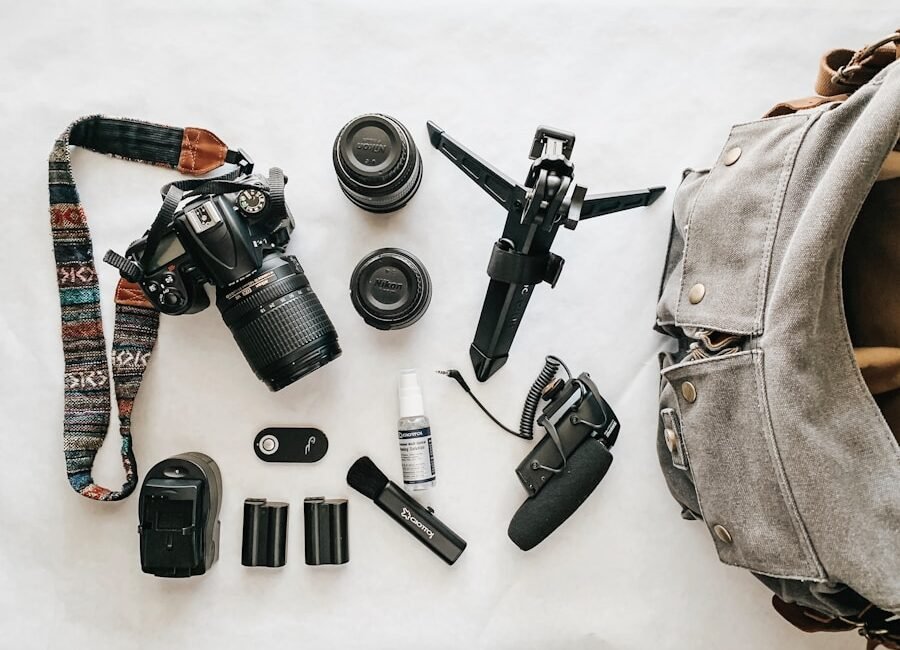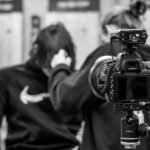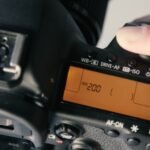When it comes to photography, it’s important to first understand your needs and assess your photography goals. Are you a hobbyist looking to capture beautiful landscapes and family moments, or are you a professional photographer looking to build a career in the industry? Understanding your goals will help you determine the type of equipment you need and the level of investment required. If you’re a hobbyist, you may not need the most expensive and high-end gear, whereas a professional photographer may require top-of-the-line equipment to meet the demands of their clients. Take the time to evaluate your needs and consider factors such as the type of photography you’re interested in, your budget, and your long-term goals. This will help you make informed decisions when it comes to purchasing photography gear.
Furthermore, it’s important to consider the technical aspects of photography and how they align with your goals. Are you interested in portrait photography, landscape photography, or macro photography? Each genre requires different equipment and techniques, so it’s crucial to understand the specific requirements of your chosen niche. For example, portrait photographers may need a good quality lens with a wide aperture to achieve that beautiful bokeh effect, while landscape photographers may require a sturdy tripod and wide-angle lens to capture expansive scenes. By assessing your photography goals and understanding the technical requirements of your chosen niche, you can make informed decisions when it comes to building your photography kit.
Essential Equipment: Must-Have Items for Your Photography Kit
Once you’ve assessed your photography goals, it’s time to consider the essential equipment that should be included in your photography kit. While the specific gear may vary depending on your niche and preferences, there are some must-have items that every photographer should consider investing in. A high-quality camera is, of course, the most essential piece of equipment for any photographer. Whether you prefer a DSLR, mirrorless camera, or even a high-end smartphone, having a reliable camera is crucial for capturing stunning images. In addition to a camera, a good quality lens is also essential for achieving sharp and detailed photos. Consider investing in a versatile lens that can cover a range of focal lengths, such as a 24-70mm zoom lens, or a prime lens with a wide aperture for beautiful bokeh effects.
Another essential item for your photography kit is a sturdy tripod. A tripod is essential for achieving sharp images, especially in low light conditions or when using slow shutter speeds. It also allows for greater stability and precision when composing your shots. Additionally, investing in a good quality camera bag or backpack is important for protecting and transporting your gear. Look for a bag with padded compartments and adjustable dividers to keep your equipment safe and organized. Finally, don’t forget about accessories such as extra batteries, memory cards, lens filters, and cleaning kits. These items may seem small, but they play a crucial role in ensuring that your photography sessions run smoothly and that your gear is well-maintained.
Budget-Friendly Alternatives: Finding Affordable Gear Options
While investing in high-quality photography gear is important, it’s also possible to find budget-friendly alternatives that can meet your needs without breaking the bank. One way to save money on photography equipment is to consider purchasing older models or refurbished gear. Many reputable retailers offer refurbished cameras and lenses at discounted prices, often with warranties and guarantees. These items have been inspected and restored to like-new condition, making them a great option for photographers on a budget. Additionally, consider purchasing used gear from reputable sources such as camera stores, online marketplaces, or photography forums. Pre-owned equipment can often be found at significant discounts compared to brand new items, allowing you to save money without sacrificing quality.
Another budget-friendly alternative is to consider third-party or off-brand accessories and lenses. While major camera manufacturers often offer high-quality gear, third-party brands such as Sigma, Tamron, and Rokinon also produce excellent lenses at more affordable prices. These lenses may not have all the bells and whistles of their brand-name counterparts, but they can still deliver impressive results at a fraction of the cost. Similarly, consider purchasing off-brand accessories such as tripods, camera bags, and lighting equipment. Many third-party manufacturers produce reliable and durable gear that can meet the needs of amateur and professional photographers alike. By exploring these budget-friendly alternatives, you can build a solid photography kit without overspending.
DIY Solutions: Creating Your Own Photography Accessories
For photographers on a tight budget or those who enjoy getting creative, DIY solutions can be a great way to create your own photography accessories without spending a fortune. From homemade light modifiers to DIY camera straps, there are countless ways to customize and create gear that meets your specific needs. One popular DIY solution is creating your own light modifiers using everyday materials such as foam board, aluminum foil, and diffusion fabric. By building your own reflectors, diffusers, and snoots, you can achieve professional lighting effects without the high cost of commercial modifiers. Additionally, consider making your own camera straps using durable webbing or paracord. There are countless tutorials available online that can guide you through the process of creating custom camera straps that are comfortable and stylish.
Another DIY solution for photographers is building your own backdrop stand for studio photography. With some PVC pipes, connectors, and fabric, you can create a portable and adjustable backdrop stand that allows for easy setup and teardown during photo sessions. Additionally, consider making your own lens hoods using cardboard or foam board to block unwanted light and reduce lens flare. By getting creative and exploring DIY solutions, you can save money on photography accessories while customizing gear that meets your specific needs and style.
Second-Hand Shopping: Tips for Scoring Deals on Pre-Owned Equipment
When it comes to purchasing pre-owned photography equipment, there are several tips and considerations to keep in mind in order to score great deals while ensuring quality and reliability. First and foremost, it’s important to do thorough research on the specific items you’re interested in purchasing. Look up reviews and user experiences to gauge the performance and durability of the gear you’re considering. Additionally, be sure to inspect pre-owned equipment in person whenever possible. This allows you to check for any signs of wear or damage that may affect the functionality of the gear.
When shopping for pre-owned photography equipment, it’s also important to consider the reputation of the seller or retailer. Look for reputable sources such as camera stores with good customer reviews or online marketplaces with buyer protection policies. Avoid purchasing from unknown or unverified sellers to minimize the risk of receiving counterfeit or faulty gear. Furthermore, don’t be afraid to negotiate prices when purchasing pre-owned equipment. Many sellers are open to offers and may be willing to negotiate on the price of used cameras, lenses, and accessories. By following these tips and being diligent in your research and inspections, you can score great deals on pre-owned photography equipment while ensuring quality and reliability.
Maintenance and Care: Extending the Lifespan of Your Photography Gear
Proper maintenance and care are essential for extending the lifespan of your photography gear and ensuring that it continues to perform at its best. One of the most important aspects of gear maintenance is keeping your equipment clean and free from dust, dirt, and moisture. Invest in a good quality cleaning kit that includes items such as lens cloths, brushes, air blowers, and sensor swabs for cleaning delicate components such as lenses and camera sensors. Regularly clean your gear after each use to prevent buildup of debris that can affect image quality and performance.
In addition to regular cleaning, it’s important to store your photography gear properly when not in use. Invest in airtight storage containers or camera bags with moisture-absorbing packets to protect your equipment from humidity and moisture damage. Store lenses with their caps on and use protective filters to prevent scratches on delicate glass surfaces. When transporting your gear, use padded bags or cases to minimize the risk of damage from bumps or impacts. By taking these precautions and practicing proper maintenance and care, you can extend the lifespan of your photography gear and ensure that it continues to perform at its best for years to come.
Investing in Quality: Knowing When to Splurge on Higher-End Equipment
While it’s important to be mindful of budget-friendly alternatives and second-hand shopping options, there are times when it’s worth splurging on higher-end equipment that offers superior performance and durability. When considering whether to invest in quality gear, it’s important to evaluate factors such as long-term value, performance benefits, and specific needs. For example, if you’re a professional photographer who relies on your gear for income-generating work, investing in high-quality cameras, lenses, and accessories can be crucial for delivering top-notch results and meeting client expectations.
Additionally, certain types of photography may require specialized equipment that justifies the higher cost. For example, wildlife photographers may require long telephoto lenses with fast autofocus capabilities to capture fast-moving subjects from a distance. Similarly, event photographers may benefit from high-performance cameras with excellent low-light capabilities for capturing indoor events such as weddings or concerts. In these cases, splurging on higher-end equipment can make a significant difference in the quality of your work and the satisfaction of your clients.
Furthermore, investing in quality gear can also provide long-term value by offering superior build quality and durability. High-end cameras and lenses are often built to withstand tough conditions such as extreme weather or heavy use, making them more reliable over time compared to budget-friendly alternatives. By carefully evaluating your specific needs and considering factors such as long-term value and performance benefits, you can make informed decisions about when it’s worth splurging on higher-end equipment that offers superior quality and performance.
In conclusion, building a solid photography kit requires careful consideration of your needs, budget-friendly alternatives, DIY solutions, second-hand shopping tips, maintenance and care practices, and knowing when to invest in quality gear. By understanding your photography goals and assessing the technical requirements of your chosen niche, you can make informed decisions about the essential equipment needed for your kit. Additionally, exploring budget-friendly alternatives such as refurbished gear or third-party accessories can help you save money without sacrificing quality. DIY solutions offer creative ways to customize gear while second-hand shopping tips provide guidance on scoring great deals on pre-owned equipment.
Proper maintenance and care practices are essential for extending the lifespan of your photography gear while knowing when to splurge on higher-end equipment can provide long-term value and performance benefits. By considering these factors and following these tips, you can build a photography kit that meets your specific needs while staying within your budget and ensuring quality and reliability for years to come.








